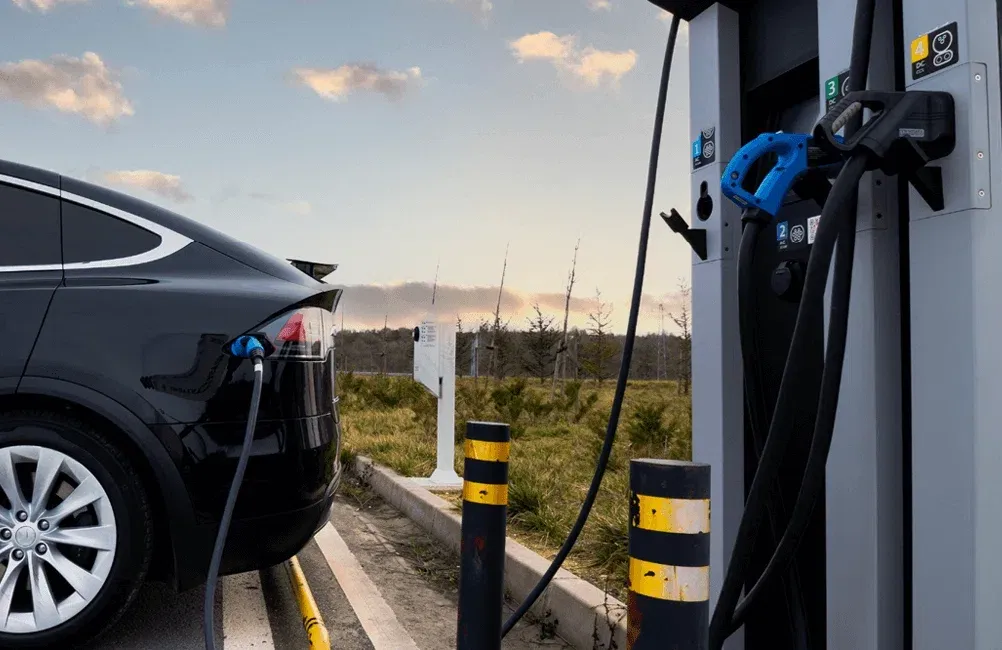Electric vehicles (EVs) have long been recognized as a solution for reducing greenhouse gas emissions, but a key question remains: How sustainable is EV charging? The short answer—EV charging is significantly more sustainable than refueling with gasoline, even when considering the energy mix used for electricity generation.
EVs can be powered by renewable energy sources such as solar, wind, geothermal, nuclear, hydro, and tidal energy. While only 36% of global electricity currently comes from low-carbon sources, this number is steadily increasing. According to the International Energy Agency (IEA), the world’s renewable power capacity is projected to grow by 2,400 gigawatts (GW) between 2022 and 2027—equivalent to China's total current power output. This forecast represents a 30% increase compared to the IEA’s previous estimates, and renewables are expected to contribute over 90% of the global electricity expansion within the next five years. In fact, the world is set to add as much renewable power in the next five years as it did in the past two decades.
With this rapid growth in renewable energy, the potential to charge EVs sustainably is stronger than ever. Transitioning EV charging to clean energy sources will play a critical role in minimizing greenhouse gas emissions and advancing global sustainability goals.

Developing a sustainable EV charging network goes beyond installing charging stations. Operators must consider various factors such as location, energy sourcing, operational efficiency, and future scalability. Below are key strategies for ensuring a sustainable EV charging business.
The success and sustainability of an EV charging business begin with strategic site selection. An ideal charging station location should consider:
Choosing sites near existing or planned solar and wind farms can enhance the sustainability of charging stations.
Placing chargers in high-traffic areas such as shopping malls, office complexes, and highway rest stops encourages widespread EV adoption.
Ensuring that the site has sufficient electrical infrastructure to support charging demands reduces the need for costly upgrades and minimizes strain on the power grid.
Additionally, investing in solar canopies or on-site battery storage can further reduce dependence on non-renewable energy and provide backup power during peak demand periods.
Sustainability extends beyond environmental considerations—it also includes the long-term viability of charging stations. Prioritizing safety and serviceability ensures that EV charging infrastructure remains functional and efficient over time.
Using weather-resistant and durable charging equipment ensures longevity and reduces maintenance costs.
Conducting routine inspections prevents breakdowns, extends equipment lifespan, and reduces waste associated with frequent replacements.
As charging stations become more interconnected, implementing strong security protocols prevents cyber threats that could disrupt services.
By designing EV charging infrastructure with reliability in mind, businesses can provide seamless user experiences while minimizing the need for frequent repairs and replacements.
Once an EV charging station is operational, data analytics plays a crucial role in optimizing performance. By collecting and analyzing charging data, businesses can:
Identifying peak usage times helps optimize power distribution and reduce grid stress.
Understanding usage patterns allows operators to set dynamic pricing models, maximizing profitability while maintaining affordability for EV drivers.
Data-driven insights enable businesses to determine where and when to expand their charging networks.
Many EV charging management platforms offer real-time monitoring, remote diagnostics, and predictive maintenance capabilities, allowing operators to proactively address potential issues and ensure seamless operation.
The EV industry is rapidly evolving, and businesses must design their charging infrastructure to accommodate future advancements. Future-proofing strategies include:
As battery technology improves, ultra-fast charging (such as 350 kW chargers) will become the norm, making it essential to upgrade existing infrastructure accordingly.
V2G enables EVs to return energy to the grid, helping stabilize electricity supply and demand. Stations designed with V2G compatibility will have long-term sustainability benefits.
Ensuring chargers support multiple EV connector types (e.g., CCS, CHAdeMO, and Tesla Supercharger adapters) enhances accessibility and usability for a wider range of EV drivers.
By planning for future advancements today, businesses can avoid costly retrofits and remain competitive as EV technology continues to advance.
The EV charging landscape is constantly evolving with new policies, technologies, and market trends. Business owners should actively participate in industry events, conferences, and forums to stay ahead of developments.
Engaging with EV charging professionals provides valuable insights into best practices, emerging technologies, and regulatory changes.
Many governments and organizations offer grants and tax incentives to promote sustainable EV infrastructure. Staying informed about these opportunities can reduce upfront investment costs.
As more consumers switch to EVs, demand for home charging, workplace charging, and ultra-fast public charging will shift. Businesses must adapt to evolving user expectations.
Keeping up with industry advancements ensures that charging operators remain innovative and competitive in the growing EV market.
Sustainable EV charging is a crucial component of the transition to a greener transportation future. While the energy grid still relies partially on fossil fuels, the rapid expansion of renewable energy sources is making EV charging increasingly sustainable. By focusing on strategic site selection, safety, data-driven operations, future-proofing, and staying informed about industry trends, businesses can build robust and environmentally responsible EV charging networks.
As the world moves toward widespread EV adoption, ensuring that charging infrastructure aligns with sustainability goals will be essential in achieving a cleaner, low-carbon future. Investing in green EV charging solutions today will not only benefit businesses but also contribute to a healthier planet for generations to come.
